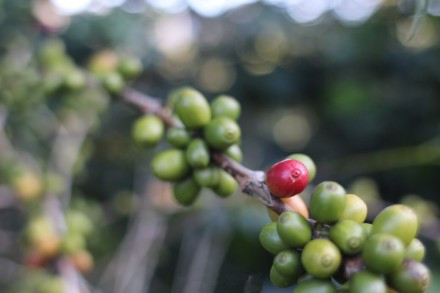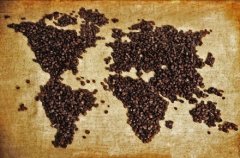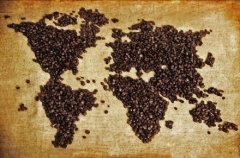Coffee common sense how to judge whether raw coffee beans are fresh or not

From the "fruit" state of coffee beans when the tree is picked to the state of making "raw beans" that can be baked, the moisture content will be controlled between 9% and 13%, and it is not easy to bake if the water content is too high or too low. Generally, we get the newly harvested raw beans with a moisture content of 11.5%-12.5%, half-washed Mantenin may reach 13%, half-washed Brazil 11%-12%, and sun-exposed mochas range from about 9% to 12%. From the beginning of polishing, the moisture content of raw beans will decrease with the passage of time.
Roasted fresh coffee beans generally have to be dehydrated a little longer, but you can also take a rough look at the shape of the beans: those with thick beans, such as Kenya and Mantenin, have to extend by 30 seconds to about 1 minute; those with thin beans, such as coconut and snow coffee, Brazil, and so on, do not have to extend too much deliberately. There are two main aspects to judge whether the raw beans are fresh or not: appearance: whether the color is bright green and shiny. Most raw beans treated with water will be emerald green as long as they are fresh.
Coffee raw bean smell: generally, if not water-washed beans, such as dry mocha, semi-washed Mantenin and so on, it may be difficult to tell how long the beans have been kept by their appearance, but the smell absorbed by raw beans provides a very obvious clue. When fresh, the smell of washed raw beans is fresh grass, while that of dried mocha beans is fermented with ripe fruit, and the smell of semi-washed Mantenin is less obvious. but do not have a stinky, like stinky tofu and other long-lasting bad wet rot smell.
Fresh coffee, raw beans, full of vitality. Semi-fresh raw beans, with a little bit of stability in the vitality. Eight months later, the raw beans lost their vitality. Raw beans for more than a year are old and boring. However, the above comments are only applicable to general coffee beans in the general preservation state, not suitable for specially treated beans and special preservation environment, such as low cause treatment, aging, wind stain treatment and so on. That's another area of appreciation.
Important Notice :
前街咖啡 FrontStreet Coffee has moved to new addredd:
FrontStreet Coffee Address: 315,Donghua East Road,GuangZhou
Tel:020 38364473
- Prev

Coffee term: Arabica (coffee arabica)
Arabica species (coffee arabica): together with Robsta species and Leiberia species, they are called the three primary species of coffee. Native farming is Ethiopia. It has the best quality among the three original species. It is mainly planted in the highlands.
- Next

How to manually select coffee beans and defective coffee beans
I agree that apples don't taste different because of their size, but when it comes to roasting coffee beans, they all have to be heated anyway, and it doesn't matter if the coffee beans are different in size. Coffee beans harvested from the same tree, regardless of size
Related
- Beginners will see the "Coffee pull flower" guide!
- What is the difference between ice blog purified milk and ordinary milk coffee?
- Why is the Philippines the largest producer of crops in Liberia?
- For coffee extraction, should the fine powder be retained?
- How does extracted espresso fill pressed powder? How much strength does it take to press the powder?
- How to make jasmine cold extract coffee? Is the jasmine + latte good?
- Will this little toy really make the coffee taste better? How does Lily Drip affect coffee extraction?
- Will the action of slapping the filter cup also affect coffee extraction?
- What's the difference between powder-to-water ratio and powder-to-liquid ratio?
- What is the Ethiopian local species? What does it have to do with Heirloom native species?

